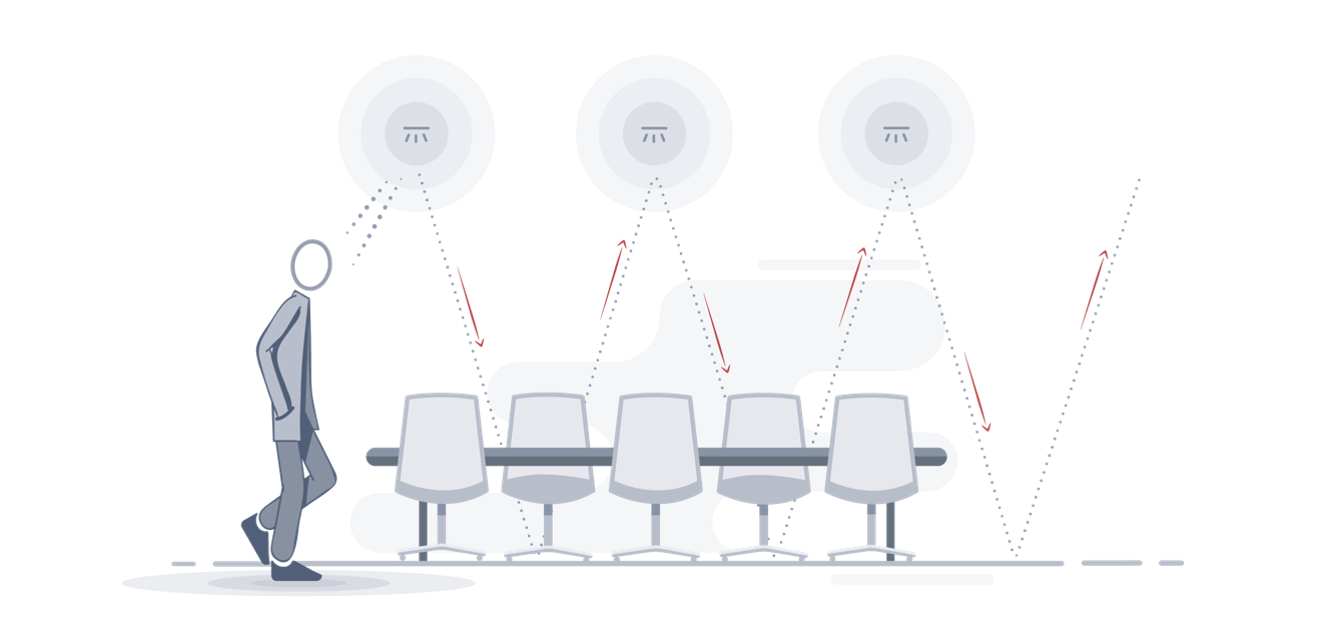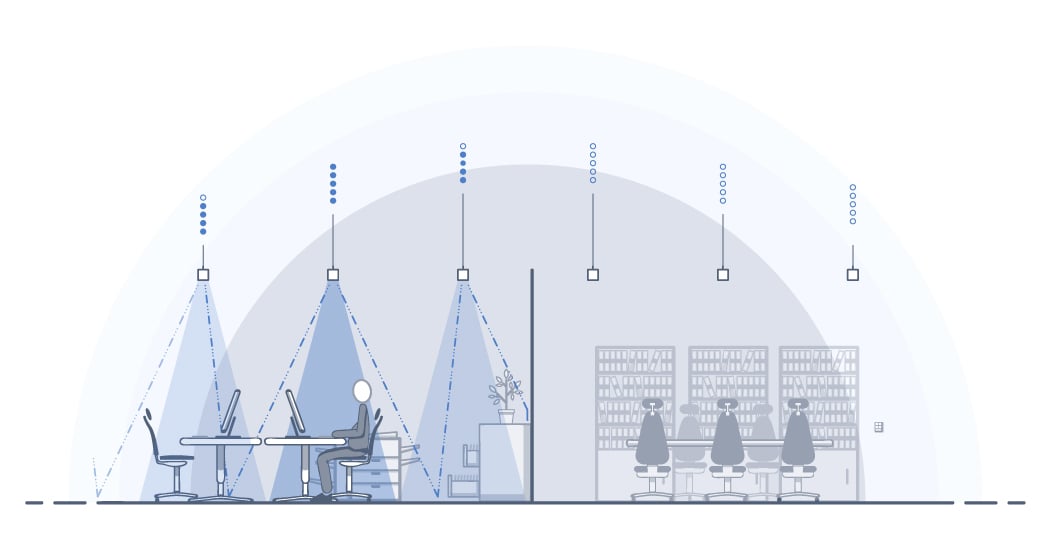How it works
Organic Response
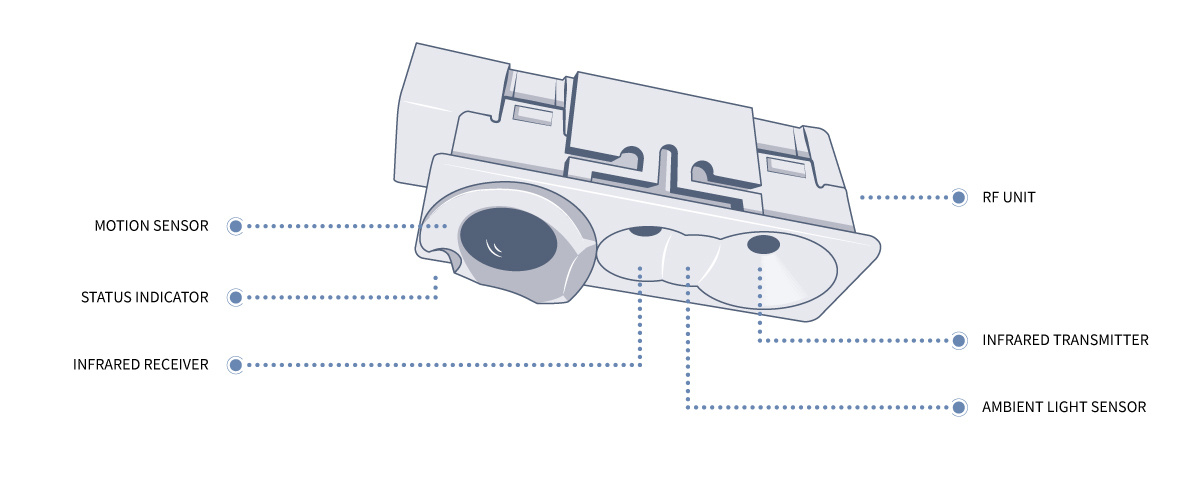
Smart sensor node integrated into each luminaire
The integrated sensor - the heart of the system - is made up of several functions and luminaires only need to be connected to the mains for the system to be up and running. A passive infrared sensor for occupancy detection enables lighting to be switched on when there are people in the room, and dimmed and switched off when no one is there. With Organic Response, light is only provided when needed.
| The sensor senses occupancy | The sensor sends out a signal to the next sensor (its neighbour) | The light level is adjusted according to the signal |
Communications between the luminaires takes place wirelessly via infrared signals, similar to standard remote control. A signal from a sensor that detects occupancy is spread through the room to other sensors, which in turn intelligently forward the signal and receive and transmit information about occupancy and light levels.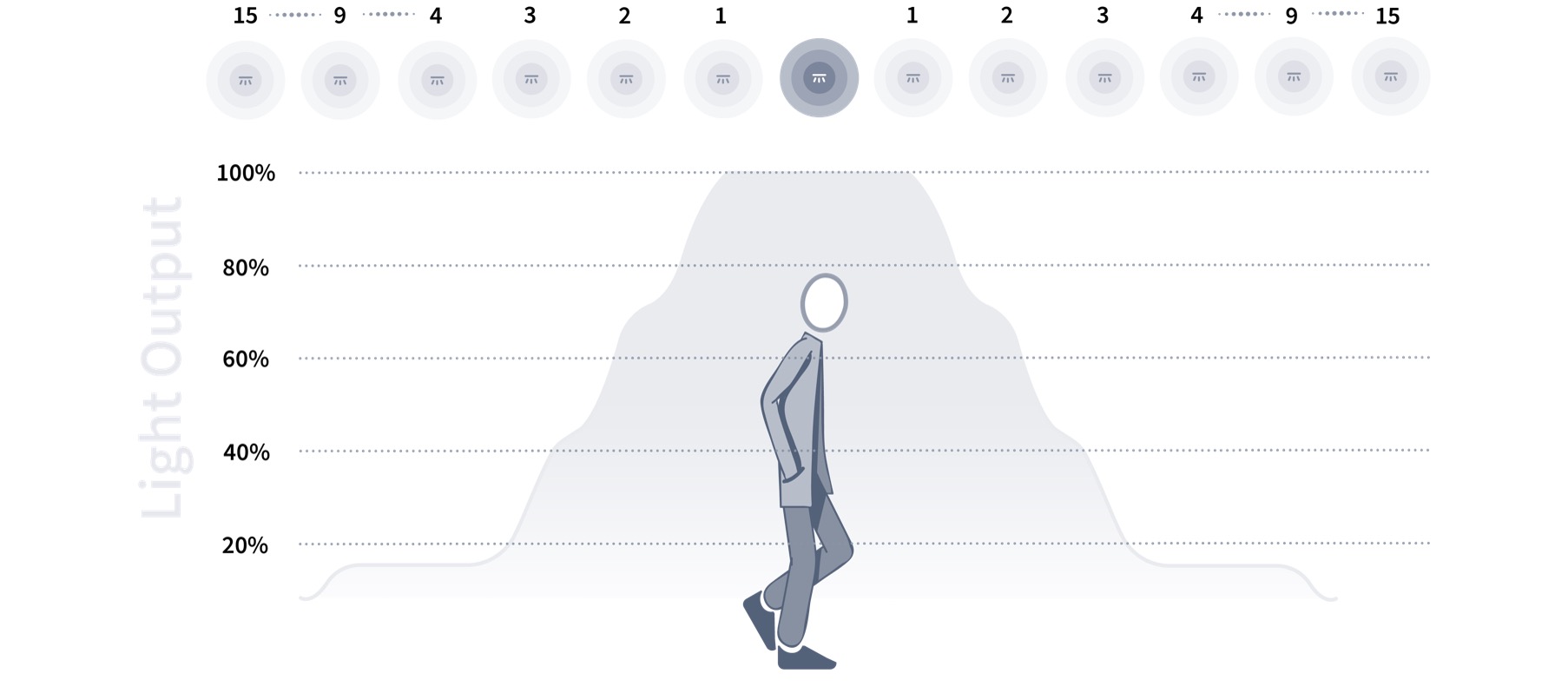
When someone is present, the system is pre-programmed so that it only lights at 100% in the current occupancy zone, and then gradually dims down to luminaire row 16. The further away, the lower the light levels. The recommended sensor distance is 1–3 meters.
To provide even more energy savings, the sensors even react to daylight and can measure the light on workspaces to automatically dim light levels when there is ample incident sunlight.
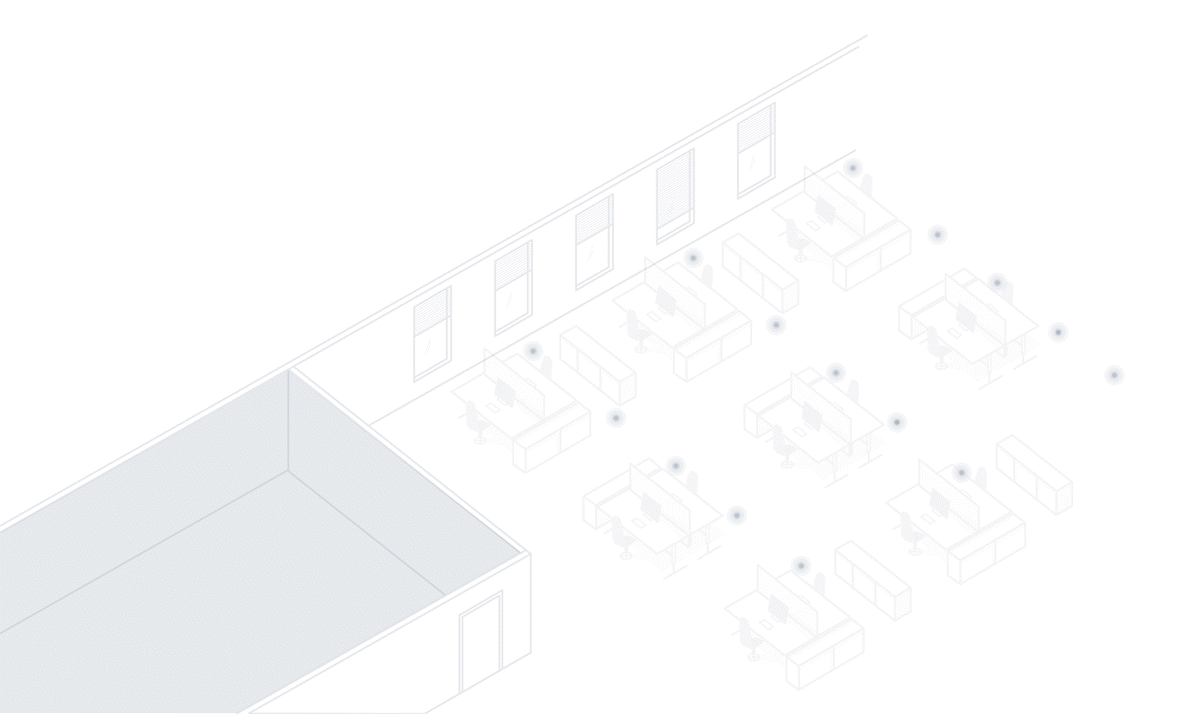
Automatic occupancy detection
All luminaires in this office have their own sensor that reacts to occupancy. Each sensor shares, receives and transmits information to adjacent luminaires so that the light spreads throughout the premises. The sensor nodes immediately know how far away they are from discovered motion. The closer a person is to a luminaire, the higher the light level. If the person approaches another luminaire, it lights up to the next higher level, etc.
The system can also handle signals from multiple sources and will always adjust to the predetermined light level based on the distance to the detected occupancy .
Automatic basic programming
Premises are renovated and remodelled, and workplaces/classrooms often change in line with the needs of the organisation. Since Organic Response is a wireless system that does not require any new wiring, it can be quickly installed in existing premises that have been renovated or modified for a new tenant. You can easily re-deploy lighting control.
Since the system is based on infrared communications, it is automatically reconfigured for occupancy detection if you set up new partitions or change the layout. This prevents the luminaires from communicating with each other, and you only need to alter luminaire zones or add new zones. Additional optimisations can be made with the app.
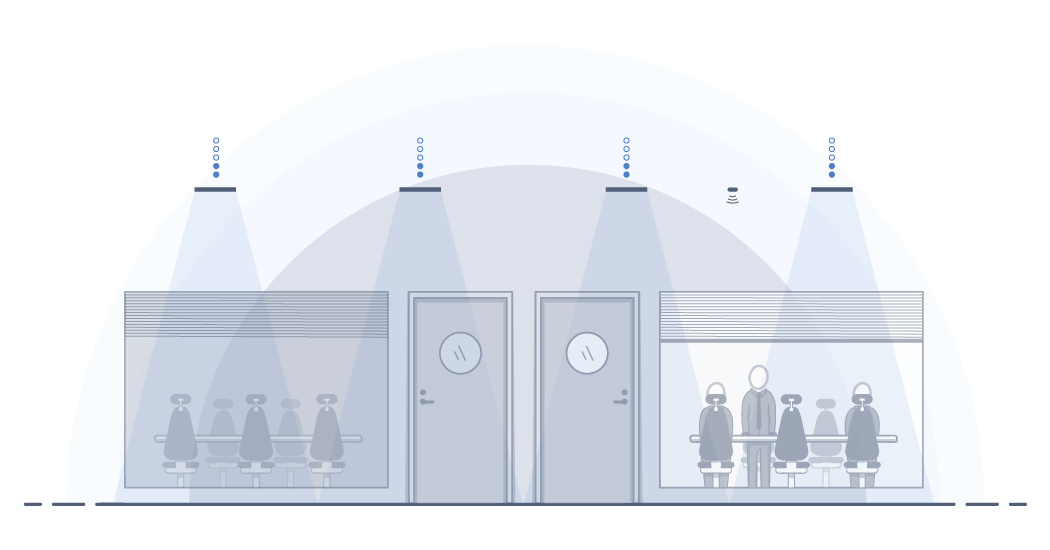
External sensors for full coverage
In areas such as corridors, an external Organic Response sensor is a perfect solution for optimising the entire workplace. The sensor is compatible with all DALI luminaires – recessed, surface mounted or downlights – and is suitable for spaces that do not allow for an integrated solution. All functions are in the same sensor regardless of whether it is integrated into the luminaire, externally recessed or surface mounted.
If you want to add a track with spotlights to your Organic Response installation, there is also an external track-mounted sensor.
Do nothing at all – or adjust to the smallest detail
Everything you need to further optimise your system can be found in the app. For example, it is here that you can adjust the flux and light levels and calibrate daylight control before simply passing your setting on to the luminaires in the system.
There are many possibilities: you can divide your luminaires into different zones to customise the lighting according to different needs and program different scenarios that are easy to switch between later.
